Dear Artist,
One day, when I was four years old, I was riding in the back seat of my grandfather’s 1936 Hupmobile. Passing through Beacon Hill Park in Victoria BC, I spied a lone woman on a stool with a big easel. “Look, Papa, an artist,” I said. My grandfather — I can still see the expression on his face — looked over his shoulder and confided, “Her name is Emily Carr. Some people think she’s crazy.”
Within a few years of that encounter, the crazy woman had passed away and then there were only her paintings and writings. Widely recognized toward the end of her life, Emily was a unique product of a Victorian upbringing, a West Coast vision and the influence of modern mentors. Emily is one of my favourites — if not always for her paintings, for her words and her spirit. Her remarkable books started appearing in 1941. In them we get a glimpse of the anxieties and joys of a creative pioneer — an original thinker with an attitude.
“When you really think about your hand, you begin to realize its connection, to sense the hum of your own being passing through it. When we look at a piece of the universe we should feel the same,” she says. Emily felt the hum and found a way to respond. Painting in the “marvelous modern manner,” she wondered if she might “ever feel the burst of birth-joy, that knowing that the indescribable, joyous thing that has wooed and won me has passed through my life.” Emily was a spiritual being who responded to the great forests and the native cultures of our coast. She was a quirky loner, who hoisted the chairs of her studio so guests would not have a place to linger. For those she “found interesting,” she might just lower one down.
Too young to test her hospitality, I nevertheless ingested her writing. Her words got me going. “There is something bigger than fact: the underlying spirit, all it stands for, the mood, the vastness, the wildness.” This wildness took both of us away in boat and camper, on voyages of discovery and countless sorties of unfinished business. “Sincerity itself is religion,” she told me, and I believed.
It was with Emily that I first glimpsed the brotherhood and sisterhood of artists. I was pleasantly surprised that her concerns were mine: “You always feel when you look it straight in the eye that you could have put more into it, could have let yourself go and dug harder.”
Best regards,
Robert
PS: “Over and over one must ask oneself the question, ‘What do I want to express? What is my ideal, what is my objective? What? Why? Why? What?'” (Emily Carr, 1871–1945)
Esoterica: Over the years I’ve placed my bottom on the same spot where Emily tarried and painted — as if I might catch some of her spirit. In dark times and in bright, it’s been difficult not to have her around. “Let the movement be slow and savour of solidity at the base and rise quivering to the tree tops and to the sky, always rising to meet it joyously and tremulously. The spirit must be perpetually moving through, carrying on and inducing a thirst for more and a desire to rise.”
I attended her grave at Ross Bay Cemetery in Victoria. Her inauspicious stone reads, “Artist and Author, Lover of Nature.” What more could anyone want?
Emily Carr (1871 – 1945)
Similar development across borders
by Mayanna Howard, Las Cruces, NM, USA
A few years ago I attended a show at the Georgia O’Keeffe Museum in Santa Fe comparing the works of Georgia O’Keeffe, Frida Kahlo, and Emily Carr. They were contemporaries, each working in their own country, without modern day communications such as the Internet, but doing similar innovative things in art. It was like a higher power had taken each of them and guided them to influence a group of people in each one’s locale. Very amazing!
There is 1 comment for Similar development across borders by Mayanna Howard
A young critic
by Jennifer Pite, Sidney, BC, Canada
Your clickback brought a smile to my face when remembering a story my father-in-law told me. As a youngster living in Oak Bay in Victoria BC, he collected butterflies, carefully placing them on pins and proudly displaying them on a velvet background. At the local annual fair held at the ‘Fairgrounds’ (now Carnarvon Park) he displayed his ‘works of art.’ When arriving home and asked by his parents about his day at the fair, his response was “Well, it was fun and everyone liked my butterflies, but ‘They’ put my table beside that same batty lady with the horrible paintings again this year.” He mused in later years that he’d had two chances to have one of her paintings but said “no” to her, thank you very much, because he didn’t want one of those horrible paintings in his house!
Calligraphy for art’s sake
by Susan Williams, Port Elizabeth, South Africa
Thank you for sharing the wonderful artist, Emily Carr. I have a problem at the moment with people not seeing my vision for the future of calligraphy where I live in South Africa. I have made a stand that beautiful writing, like a beautiful painting, should not be competitive with awards, but a self-made journey of improving one’s own abilities and to enjoy the journey through one’s life.
Source of inspiration
by Anne McClelland, Mountain View, AB, Canada
When I was about 9 years old I saw a poster on display at our local library — the first painted image that ever really reached out and grabbed hold of my attention — it was Big Raven by Emily Carr. When I saw it I thought “now THAT is painting” and from that day forward I looked at every painting of hers I could find in the library, read her books, and told myself that if I could ever do anything even remotely like it then perhaps I might call myself a painter too. Two years ago I painted this image which I call “Big Raven Dream” to express my debt to Emily. She continues to inspire my work, my thoughts and my life.
I live in a small corner of southern Alberta next to Waterton National Park. I am surrounded by rivers and coulees and mountains and swathed fields of hay and I try to approach all of these scenes with the same vigor which imbues Emily’s paintings. She was a character out of place in Victoria’s stiff society. Many of us who paint are similarly ‘out of place.’
What motivates me as a painter is my desire to make seen the feelings I have about the world I explore and this might mean rendering it in stylized shapes or colours much as Emily did in her work. She was not afraid to put as much of herself into the image as would fit. I strive for the same bravado. I’m a crazy woman too.
Artistic questioning
by Tracy Wall, Denver, Colorado, USA
The quote in the end struck a chord with me; you never stop silently critiquing a piece and questioning yourself. Also, the question in the PS about the purpose/direction of a piece rings in my head over and over again. My work is ever-evolving, and I must always go back and ask questions like these to ground myself.
Do people in every profession do this? I have trouble picturing an accountant doing this, or a stock trader. Does a dentist say, “Could I have put more into that filling?” Maybe just the creative types: actors, writers, etc., continue to question their work. When I work my other job as a massage therapist, I’ve reviewed my work. Although I see an art to any job — “Every calling is great when greatly pursued.” (Ralph Waldo Emerson) — not all are compelled to reassess. So perhaps this is a personal character thing.
Deviating from the norm
by Dave Edwards, Blyth, Northumberland, England
First thing I did this morning when I woke was to go to the computer and read your letter. I was delighted to see today’s topic is Emily Carr. I have never been to Canada, but I adore Canadian art and one of my favourites just has to be Emily. I’d forgotten some people once thought she was crazy. That tends to happen when people are ahead of their time. Poor Emily couldn’t remain on earth long enough for the rest of the world to catch up with her. When I read her words I find it hard to find any craziness in them – quite the opposite in fact.
Emily inspired you to an awareness of the brotherhood and sisterhood of artists and that is something I too feel strongly about. Only problem is… many artists don’t realise we are brothers and sisters and many of us have been disowned by them. I myself produce art that is not recognized by many as art. Here in England there are many artists whose main objective seems to be to imitate a camera as closely as possible. I love the work they produce, but I don’t feel it should be classed as “the norm” with anything deviating from it seen as “wrong.”
I hadn’t seen the painting, Strait of Juan de Fuca before and as I look at it I ask myself the question, “Could a camera ever imbue a scene with such emotion?” The answer is a resounding “NO.” By the way — I love photography and rarely go out without my digi-cam in my shirt pocket.
Finding spirituality in artmaking
by Pamela Ellis, Mission, BC, Canada
At first glance, I thought that you were calling me a crazy woman. I wondered to myself, “How did you know?” I’m just kidding. While I was reading the quotes from Emily Carr, that you have included in this issue, I could feel a tingling wave of chills rise up my spine. Goose bumps were present on my arms. I understood. I am a self-taught artist and have much to learn in a technical sense. But, one thing that I am absolutely certain of is this: without the hum, there is no art for me. In my eyes, this is what painting is all about: transferring that hum into a form that can be seen with the eyes as well as felt with the soul. When I can feel that flow of electric life running through my heart to my hand to the canvas, I can think of no other place that I’d rather be and nothing else that I’d rather be doing. Is painting a Spiritual event? Absolutely! But this is true only if we are fully present while we are engaged in the process.
The Forest Lover
by Ruth Siegel, Dallas, TX, USA
A few years ago, I read The Forest Lover, a fictional autobiography of Emily Carr. I really enjoyed her paintings, especially her depiction of trees. I read more about her and I read a few of the books she has written. Most artists in the US do not know about her or about the Group of Seven. This really surprised me. Since some of the people I paint with also subscribe to your letter, I will bring my Emily Carr ‘picture and short biography’ book to class tomorrow.
Capturing the spirit in paint and text
by Marney Ward, Victoria, BC, Canada
Emily Carr is one of my most profound influences. Emily strived to make spirit tangible, capturing light and energy in her later works in an almost ecstatic consummation. Her writings touch my heart in a way that no other artist has come close to doing, because she tries to express in words her lifelong struggle to get to the heart of her subject, to go beyond mere image to the pulsating spirit within.
“Oh I do want that thing, that oneness of movement that will catch the thing up into one movement and sing — harmony of life.” (Emily Carr, Hundreds and Thousands) Luckily for me, I live in Victoria and can still gaze upon the same trees in our local parks and forests that she loved and captured in paint.
Act for you and you alone
by Rosemary Bennett, Calgary, AB, Canada
I was born in Victoria. My grandmother moved there in 1920 from Red Deer. Granny had a parrot and, of course, Emily had her monkey. My grandmother’s house was on Emily’s path to Beacon Hill Park. They spent time chatting over Granny’s fence many a morning. Would that I could have been there for that!! Our house had all of Emily’s books and Mum read them to me as bedtime stories. The respect for Emily and her unwomanly endeavors was told to me over and over again. It has enabled me to be who I am. Women’s Lib is great but just doing what you are going to do and be damned what others think comes into my psyche straight from my mother’s belief that women like Emily Carr deserved their due in all walks of life. Kudos to Emily! Her spirit lives on in her art and writing. She walked to a different drummer with her head held high!
Forest spirit
by Laurel Redmond, New Westminster, BC, Canada
I have spent most of my life near the trees in British Columbia and go to them like people go to church. Hiking in the forests, sitting under a small group of large healthy trees, even just driving through a forest on the way somewhere will remind me of the absolute power and beauty of nature and man’s place in it all. Many of Emily’s paintings were done along the west coast of British Columbia on tiny, remote islands, in rainy or windy and overcast weather. Her paintings look exactly how it feels, and the colours, all of them, are bang on. The smell of wet soil, grass, moss, new wood, old wood, salt air, wild growing mushrooms, the sound of pebbles rolling up and down the beach with the waves, the constant changing of light and colour patterns as clouds are pushed across the sky and the way light and colour plays on distant hillsides and reflects off the water is amazing. Everything is so alive! The way gigantic, lushly curved tree branches near the edge of the forest (just feet from a rocky shore or at the edge of a clearing) will wave dramatically in the wind and noise, but just steps inside the forest all will be quieter, calmer, safer, with only the tree tops above you affected by the wind. Rocking in long slow arcs, each tree’s individual pattern different from the next, but the movements have a unity with each other. Very exciting! There is such energy, mystery and beauty everywhere you look.
In Scorned as Timber she shows the beauty of nature even when near death or destruction. The stripped spar tree still has its dignity and is loved. Perhaps this feeling of ‘forest’ is necessary to identify with Emily’s work. When I look at her work, I unconsciously inhale through my nose, smell the beauty and relax. I want to be there.
Clarification
by Kirk Wassell, Chino Hills, CA, USA
Many women took offense to your comments in Breaking the Curse, inferring that the outward appearance of a woman may sacrifice her ability to let others focus upon her work rather than her(self). I know myself that I hear your blindness to gender, but others only hear the unanswered anger that women, like many other groups in history, have continually had to endure. I think that your comment may deserve further clarification.
It seems that within the context of societal parameters, there are many barriers to cross. Crossing those barriers, though, requires tact and compassion for those who are slow to come around. While I believe I understand your point, I think both views have served to cause people to think differently, and therefore neither approach is wrong, but each may have need for greater understanding regarding the practice and the outcome.
Strong action initiates change
by Judythe Sherwood
I agree totally that repressive, non-educated societies depress women, literally and figuratively. Education is certainly the key. I wonder, however, at the “time and patience” philosophy. When you think back to the Civil Rights movement in the 1960s, after a century of repression, socially, intellectually, educationally, financially, the rampant segregation of American Blacks from mainstream American society, the only way their civil rights became an issue was pressing the issue and forcing the changes. Martin Luther King, Robert Kennedy as Attorney General, and eventually the court system all applied pressure. No passive “time and patience” there.
To initiate change there has to be pressure applied. I’m not necessarily an advocate of women in art, women in professions, etc. I am an advocate of women pressing issues, pushing and applying pressure, critiquing and not accepting the ‘norm.’ Women are going to have to generate the pressure to change their circumstances. In those situations, it is not socially pleasant to be around the ‘pushy, aggressive, assertive, in-your-face female. But it will create change.
Archived Comments
Enjoy the past comments below for A crazy woman…
How wonderful to read all the testaments to the amazing Emily Carr. I discovered her years ago in a Newsweek magazine article which showed a painting of hers. I was thunderstruck and have been ever since. Thanks for sharing the love we all have for our earth and the spiritual path of a brave, smart woman. And her paintings express that so well.
I wonder why it is that whenever I hear of an artist being described as “that crazy woman”, it never fails to delight me! I aspire to end my life as a “crazy woman” who is intent on nothing more than to pursue my art. I’ve already informed my husband that we need to build a wide porch onto the house so that, in my old age, I can sit there in my rocker and shake my mahlstick at passersby! While I’m here, I also wanted to mention how much I appreciate the links that are added into the comments in your clickbacks. I know that it takes extra time to find and include them, but it’s always a delight and adds so much to our experience here. Thank you!
Yeah Crazy Women! Where would the world be without us? Imagine all those old fairy tales and legends and myths without the Old Woman, or The Witch or The Crone or The Healer – all of them crazy Women. Nevermind that we are scorned by those who don’t know – those who do far make up for the loss of kudos with their love and respect. As for Judyth Sherwood’s comment: “Women are going to have to generate the pressure to change their circumstances. In those situations, it is not socially pleasant to be around the ‘pushy, aggressive, assertive, in-your-face female. But it will create change.” I so agree. But I wonder if we have to be pushy and agressive. It’s my experience that we can be solid in our own position in the Scheme of Things, without pushing or stressing, making comments here and acting there, without the anger or petulance that puts people off so. As someone who coaches women to do that, I find my clients and students having a more joyous, calm, and infinitely more fulfilling experience when we do it that way. I believe it’s about Being, rather than Doing. Last winter I got tired of all the old stories and excuses, and had this feeling that The Time is Coming, or some such Important Dream – and that it’s time we all got off our stuff and just dared to Be who we are and do from there. Easier said than done, but that’s what people like Georgia O’Keeffe and Emily Carr did. Of course there was always the mundane world interwoven into their experience, but that’s what makes the challenge sweeter, no? Imagine having the guts to paint the energy the way Carr (and Van Gogh) did, imagine the courage O’Keeffe had in refusing to bend to the norm of her day. They have paved fabulous trails for us, and we need to walk those paths in our own ways before they close up behind them.
Last Night I DREAMED About Emily Carr’s art and life and world before I read your article about her or had ever heard of her. Thanks to you and Emily for the acquaintance.
Your kindly-meant words to the artist in Uganda raised such a storm! As a man, I seek out woman artists for inspiration. From Kauffman to Kahlo they often show me a perspective which my gender blinds me to.
Anyone who deprives another of his or her equal rights has lost the right to tact and patience.
I, like so many other fortunate people was drawn into the delightful vortex which was Emily Carr. One of my students, upon hearing I would be teaching two one-week workshops in Canada, one on Gabriola Island and the other in Tofino, handed me the complete works of Emily Carr. Emily Carr opened up the world of the great northwest, the history and preservation of the art of the native people to those of us from middle Tennessee. Emily Carr single-handedly saved the images and the history of the totem poles for all posterity. Now my students and I view her art when ever and where ever we can. I encourage all of my students to subscribe to your letter for your pearls of wisdom. Thank you Robert for the great letter about this great artist and author, Emily Carr. Thank you Robert for another great letter!
Very few people know of Emily Carr’s love of dogs. She was their fierce defender and I loved her for that! She would have treasured your airdale. She “collected a huge surrogate family of animals” and I love her for that, if not her paintings.
I am delighted to see that the name Emily Carr has become familiar to Americans, more now than before that wonderful exhibit of 3 great women painters, Kahlo, O’Keeffe, and Carr. I spend a great deal of any given year painting in New Mexico and have had the occasion(s) to enlighten my American friends (mostly fellow artists) about Canadian art and artists, the Group of Seven and beyond. I particularly warmed to the responses regarding Emily’s spirituality seen in her treatment of the forests and the B.C skies. I happen to live in a house in Ontario previously owned by a man who knew Emily Carr in the ’40s. He visited with Emily on the west coast, seeing her often in her “house of all sorts”. In fact, on one of such visits, this man (Pete Colgrove) took from Emily’s garden a little plant called a snow drop and planted it in what is now our backyard. I can’t tell you what a thrill it is to have this plant still growing in my backyard, saluting as it does each spring the start of that wonderful season. Each time I rush out to see if the snowdrop is up, as soon as the weather starts to have that spring thaw feeling, my heart swells with joy and I can feel Emily’s presence right therre! To really come to know the full spiritual intensity of Emily’s forest paintings, one has to actually go to B.C… (one need only go to Vancouver Island and drive a little ways out of Victoria)… to walk through one of these dense gothic cathedral-like forests. It is breathtaking! I heartily recommend it.
Thank-you so much for telling everybody about your point of view on Emily Carr!
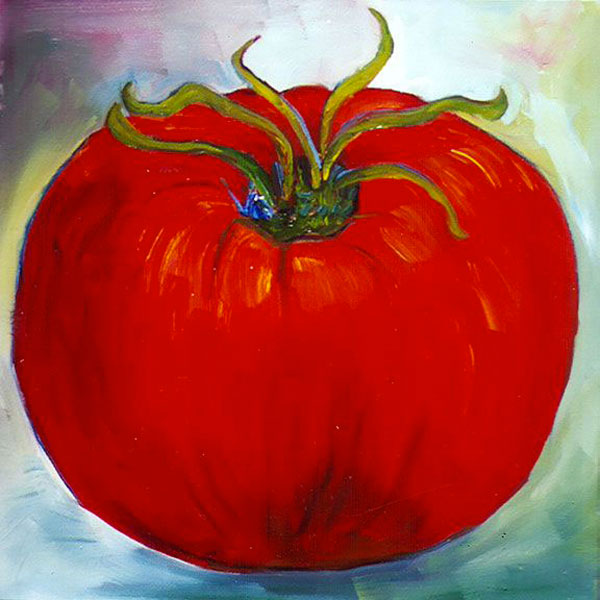
Tomato oil painting |
You may be interested to know that artists from every state in the USA, every province in Canada, and at least 115 countries worldwide have visited these pages since January 1, 2013.
That includes Ann Heckel of Lambertville, NJ, USA who wrote, “When you look into the eye of nature and see its soul and feel its energy, how can we not be intoxicated? The energy of it all makes me hallucinate.”
And also Theresa Maggio who wrote, “Whatever you say about painters and painting is equally true for writers and writing. You are so prolific!”
And also Jac Andre who wrote, “You know Emily still appears sometimes, in ghostly form, at the James Bay Inn, and is occasionally seen on the grounds of St. Ann’s Academy.”
And also Kathleen Thompson of Courtenay, BC, Canada who wrote, “As well as creating some of the best West Coast art of hers or any other generation, she was a writer, animal lover — an original in all she did. Always been one of my true inspirations.”
And also Tatjana Mirkov-Popovicki of Port Moody, BC, Canada who wrote, “Some artists protect themselves by ‘painting only for myself,’ some stay in the trenches, and some become masters (even after death).”
And also Peter Moore of Courtenay, BC, Canada who wrote, “I love that quote, ‘Sincerity itself is religion.’ The one which has helped me the most in showing my work is ‘Acceptance on someone else’s terms is worse than Rejection.’ (Mary Cassatt)”
And also Andrea Cleall of Forestville, CA, USA who wrote, “Emily Carr’s paintings, unlike mine, were bold and gutsy and I got a strong feeling for the woman. I thought: how did she have the guts to be such a rebel when Victorian ‘ladylikeness’ was the tone of the day?”
And also Nancy Fortunato of Palatine, IL, USA who wrote, “I do think Emily Carr’s work should be seen in person. Most of the books that show her images reproduced just don’t do justice to the originals.”







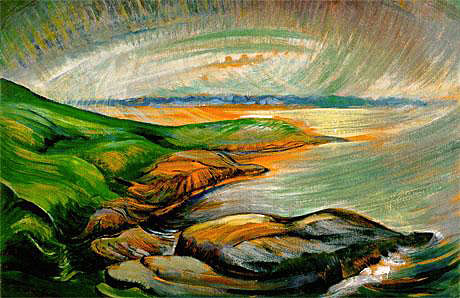
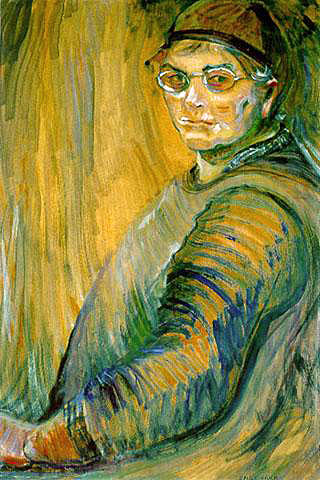
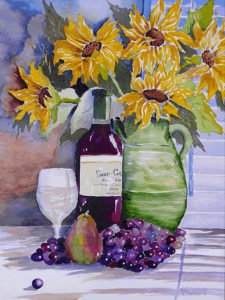
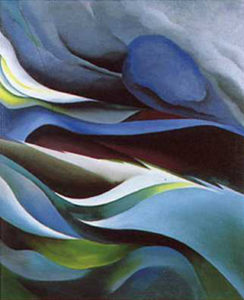
















Thank-you for telling everybody about your point of view on Emily Carr. I think it’s really interesting! Thanks so much, Robert Genn.